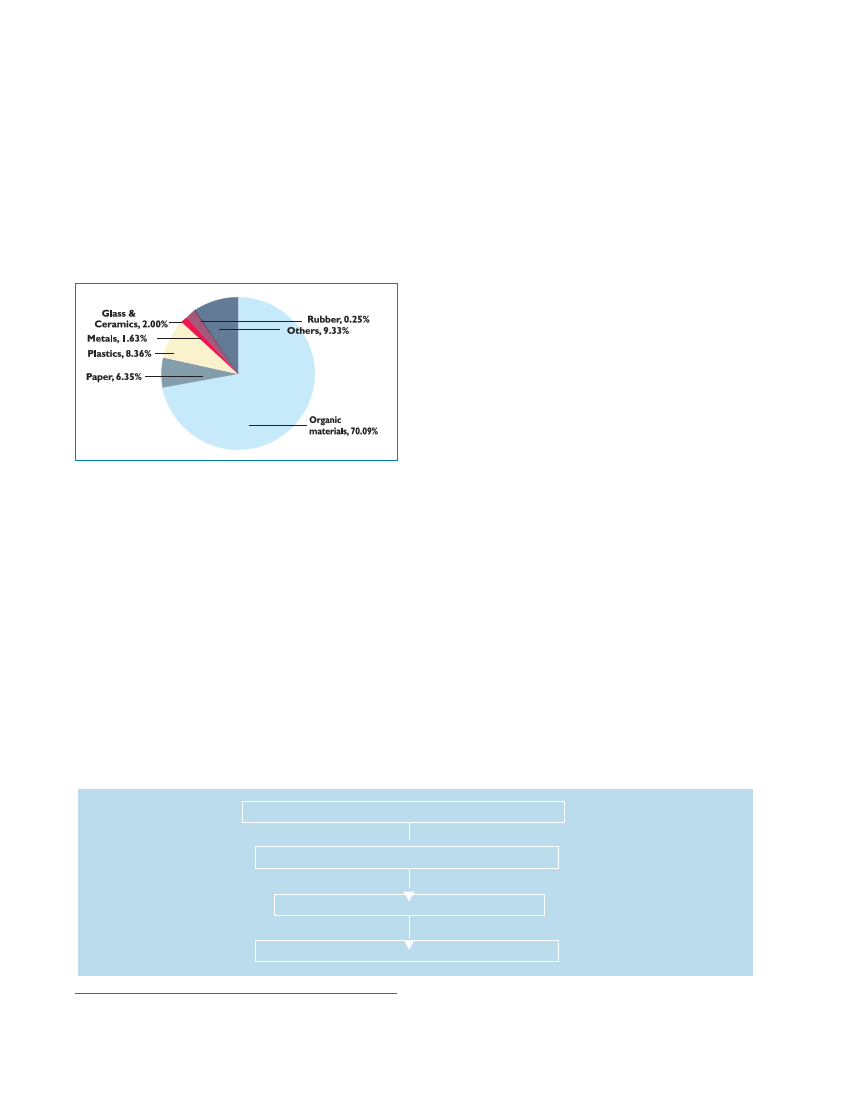
BEST PRACTICES ON SOLID WASTE MANAGEMENT OF NEPALESE CITIES
the waste is: 72.09 per cent organic waste, 6.35 per
cent paper, 8.36 per cent plastic, 1.63 per cent metal,
2.00 per cent glass, 0.25 per cent of rubber, and 9.33
per cent of other materials. (UEMS data, 2008). National
waste composition data also show that most of the
waste is either organic or biodegradable. Therefore,
UEMS has initiated a HH composting programme in
the core area of LSMC.
Chart 9: Composition of solid waste at source
the health hazards caused by careless dumping of waste
- especially organic waste.
Transportation and final disposal
Local people themselves bring their compost to sell it
at the UEMS office, and UEMS sells it to the local market
for use as a soil improver.
Organisational and
financial aspects
Waste collection and recycling
Each participating HH segregates organic waste and
puts it in the compost bin, which can hold up to 50kg
of waste. In order to encourage composting and assist
marketing, residents can sell compost to UEMS at the
price of NRs.6 per kg (UEMS, 2008). Then UEMS refines
and packs the compost and sells it to local flower
nurseries and other customers for NRs.10-12 per kg
(UEMS, 2008 data). UEMS claims to collect 900 kg of
compost each month (UEMS, 2008 data). The initiation
of the HH composting programme has raised awareness
so that others started asking for compost bins and were
eager to know how to use them. Similarly, UEMS
discovered that residents became more aware about
Overall process
According to the data provided by UEMS, four
members were working at the office as volunteers in
composting programme (UEMS, 2008 data). UEMS
have trained 100 local volunteers30 to promote HH
composting and waste recycling techniques (UEMS,
2008 data). In 2008, their target has been to sell or
provide 1,000 compost bins of capacity 50 kg in the
various wards of the core areas of LSMC. UEMS has
now started discussing with local communities about
constructing a community composting facility with a
total capacity of 1000 kg. According to UEMS, working
in a core area is more effective than working in
suburban areas, because information is shared very
effectively among people of the same ethnic origin.
UEMS records show that each month it buys compost
worth NRs.5400 (UEMS, 2008 data).
Major problems and issues
Despite its effective HH composting scheme, UEMS is
facing problems due to insufficient staff, financial
Distribution of compost bins to HHs
Training in composting for HHs
UEMS buys compost from individual HHs
UEMS refines, packs, labels and sells compost
30 These volunteers are engaged in other community mobilization activities (like water supply)
42